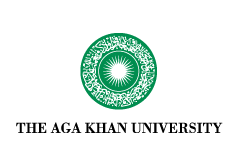Spatio-temporal dynamics of water footprints of food consumption in South Korea: a decomposition analysis
Document Type
Article
Department
Arusha Climate and Environmental Research Centre
Abstract
South Korea faces severe water stress, as classified by the OECD, with changing dietary patterns significantly impacting water resources. To ensure water conservation and food security, it is crucial to understand the driving factors of the water footprint of food consumption (WFC). This study examined the WFC in South Korea from 2007 to 2023, focusing on how dietary choices impact water use and sustainability, and identified the key driving factors of changes in WFC. Using the logarithmic mean Divisia index (LMDI), this study decomposed these drivers into water footprint intensity, dietary structure, average dietary intake per person, and population effect. Additionally, global and local spatial autocorrelation analyses were used to measure the degree of spatial aggregation and distribution of WFC across administrative units. Results revealed a significant increase in WFC, from 27.6 km3 in 2007 to 34.7 km3 in 2023, with an average annual growth of 2%. Among the drivers, water footprint intensity contributed most to the increase in WFC, while average dietary intake per person led to a decrease. Cereals, meats and fish collectively account for more than 76% of the total WFC during the study period. The findings suggest that the drivers influencing the changes in WFC vary across administrative units, underscoring the need for tailored policies and strategies to promote sustainable food consumption practices that could conserve water resources in each administrative unit.
Publication (Name of Journal)
Environmental Management
DOI
https://doi.org/10.1007/s00267-025-02151-z
Recommended Citation
Adeyi, Q., Adelodun, B., Odey, G. et al. Spatio-temporal Dynamics of Water Footprints of Food Consumption in South Korea: A Decomposition Analysis. Environmental Management (2025). https://doi.org/10.1007/s00267-025-02151-z
Creative Commons License

This work is licensed under a Creative Commons Attribution 4.0 International License.
Erratum
Removed FAS Pakistan
